A Brief on Employee Experience vs. Employee Engagement
While delivering a stellar customer experience will build a brand and boost profit margins, no business leader should underestimate the impact that happy people have on the success of their company.
Angela Ahrendts, former senior vice president of retail at Apple Inc., summed it up best with these words: “Everyone talks about building a relationship with your customer. I think you build one with your employees first.”
Employee Experience vs. Employee Engagement: What’s the Difference?
In business and human capital management circles, there’s often talk of “employee experience” and “employee engagement” when the subject of employee satisfaction comes up. The two terms are often used interchangeably, but there are significant differences between them.
In a Gallup article that focused on the differences between employee experience and employee engagement, writer Ryan Pendall proposed two concise definitions:
- Employee experience is the journey an employee takes with your company.
- Employee engagement is an ongoing part of the employee experience.
Essentially, employee experience refers to the long-term life cycle of an individual’s relationship with an organization; employee engagement contributes to that larger picture.
In this article, we’ll explore both of these concepts from all angles and consider how you can optimize both to ensure your business is a place that people want to work.
What is Employee Experience?
In short, employee experience includes all of the touchpoints people come across when they work for an organization. It begins with their candidacy for a position in the company, through to the hiring process, onboarding, performance management, compensation, learning and development, rewards, and all the way to their exit from the organization.
Employee experience is what an individual sees, feels, learns, and does at every stage of their tenure with a company.
Why Is There Such a Focus on Positive Employee Experience?
Employee experience has always mattered, but now it’s more crucial than ever. We’re currently experiencing an unprecedented skills shortage. According to the World Economic Forum, a record 4.4 million Americans left their jobs in September of 2021. Now employers – especially in low-wage sectors – are struggling to fill open positions.
Given that the cost of replacing one employee ranges from one-half to two times their annual compensation, it’s a trend that most employers are desperately seeking to slow and reverse. Employee experience is widely recognized as the ideal place to start, with over 9 in 10 companies saying they plan to focus on employee experience initiatives over the next three years.
Tips for Building a Good Employee Experience
As we discussed earlier, employee experience isn’t a “point in time” concept; it’s a circular, ongoing process.
Here are some guidelines for optimizing your employee experience at every stage of people’s journey with your organization.
Revisit Your Talent Attraction and Hiring Approaches
We’ve all heard the term “first impressions matter,” and it couldn’t be more relevant to the world of recruitment and hiring. So, take a close look at every initial interaction prospective candidates have with your organization.
This covers everything from how your job postings and job descriptions are worded to the nature of applicants’ interactions with representatives from your organization. How long does it take for them to hear from you? How organized is the interview process? Do interviewers arrive promptly, and are they prepared with the right questions?
Remember that if candidates don’t end up joining your team for whatever reason, if they had a poor experience during this phase, they’ll likely tell their friends and professional networks all about it, which could harm the perception of your brand in the marketplace.
Optimize Onboarding
The employee onboarding process is how your new hires are introduced to the performance and social elements of their role in the organization. The aim of employee onboarding is to ensure people quickly acclimatize to their new environment and become productive as quickly as possible.
Effective onboarding is important for several reasons. Of course, everyone feels a little nervous when they start a job with a new company, but if people feel unwelcome, intimidated, or overwhelmed, they could quickly become disillusioned or regret their decision to accept your offer. In the longer term, ineffective onboarding experiences could manifest in people failing to reach their personal career goals and never really making a meaningful contribution to your business.
Don’t make the mistake of treating onboarding as a mere “tick in the box.” Ideally, the process needs to be strategic and last for at least 3–6 months. To set your employees up for success, you need to give them access to the correct information, resources, and people. Here, line managers should take responsibility for offering advice and direction and ensuring that all other stakeholders in the business with whom the new hire will need to interact avail the necessary time.
Many organizations assign new hires a personal “buddy” to support them through their first few months on the job. This individual serves as an informal sounding board and paves the way for the new hire to integrate socially into their team and the larger organization.
Foster a Strong Culture
Company culture is no longer dismissed as an HR buzzword. In recent years, many of the world’s leading and most successful brands have spoken out about its value and the role it plays in an organization’s long-term success and profitability. Indeed, a culture that attracts high talent can lead to 33% higher revenue.
So, what exactly is company culture?
Your organizational culture essentially embodies the way your employees feel about working together. It defines their actions and attitudes towards one another and the organization as a whole and informs what is deemed acceptable and unacceptable behavior.
What are some of the characteristics of companies with strong cultures? These organizations typically emphasize meaningful work, constructive feedback, and strong and authentic leadership.
Embrace Workplace Diversity
In diverse workplaces, employees from all walks of life, gender, race, age, socio-economic backgrounds, and sexual orientation are welcomed into the organization.
Embracing diversity simply makes business sense. That’s because it immediately establishes a platform to build energetic, innovative teams that can spark change. Project teams that comprise individuals from different professional and cultural backgrounds, life experiences, and prior work roles generally develop stronger plans and better ideas.
Diversity can also accelerate your recruitment efforts. The findings of recent research by Glassdoor reveal that more than 3 in 4 job seekers and employees (76%) report that a diverse workforce is an important factor when evaluating companies and job offers.
The benefits of workplace diversity also speak directly to the bottom line. According to a McKinsey report, every 10 percent increase in the racial and ethnic diversity of a business’s senior executive team leads to a 0.8 percent increase in earnings. Companies in the top quartile for racial, ethnic, and gender diversity have a 25 percent greater likelihood of being more profitable than the median for their respective industries.
Be Flexible
Today, people want to work for organizations that appreciate their personal life beyond the office. Affording employees a degree of flexibility about how and when they work will go a long way to growing their loyalty and fostering a positive overall cultural climate within the organization. So, be open to allowing people to take off for a few hours to attend a yoga class or watch a child’s school play, or take an elderly parent to a medical appointment.
Pay flexibility – allowing people to access the wages they’ve already earned but not yet been paid – can be invaluable for many employees (especially hourly workers who often work from paycheck to paycheck). It eliminates the stress and embarrassment of borrowing cash from friends and family or approaching unsecured lenders.
Part of being flexible is ensuring your people have a work-life balance. Yes, people are generally happy to work hard during their regular contracted hours, but they like to spend their personal time focusing on themselves, their families, and their friends. So, why not make it quick and easy for people to switch shifts when they need to so that they can manage their work-life balance better?
Recognize People
People are most motivated and happy when they feel that others appreciate their hard work. Employees who receive regular positive reinforcement are more likely to stay with their employers over the longer term. Businesses that can retain their people are also quickly noticed by prospective recruits. And, of course, they save money as they need to invest less in recruitment efforts due to high staff churn levels.
Another good reason to prioritize employee recognition is that it fosters a culture of self-improvement in the organization. Recognized employees quickly put their hands up to take on more challenges and engage in learning and development initiatives.
Many employers think of recognition in monetary terms alone (paid bonuses, for example.) However, genuinely recognizing your people doesn’t have to cost you much at all. Consider these simple yet effective ideas:
- Take time to compliment people
- Smile and say thank-you
- Offer extended breaks, half-days, or late starts
- Send an email or card
- Grant paid birthday vacation days
- Sponsor small donations to charities of your employees’ choice
Explore the Best Employee Benefits and Perks
Benefits and perks are essential ingredients of optimizing the employee experience. Access to these perks is often top of mind among job seekers when they’re evaluating potential employers. Crafting an attractive package of benefit options will boost your talent acquisition and retention levels and help you build an employer brand that gives you an edge over your competition.
Many organizations that employ hourly workers don’t afford their employees extensive benefits packages. But in a tight labor market, skimping on perks can be detrimental to employees and employers. If people can’t afford to look after their physical health or worry about how they’ll support themselves and their families – both today and over the longer term – there’s a good chance it will ultimately affect their ability to perform their jobs to the required standard. And ultimately, low productivity levels will hit a business’s bottom line.
Provide Meaningful Feedback
The practice of performance appraisals (or performance reviews) has been around for decades. In recent years, however, some assert that this institution is antiquated and question its relevance in the modern business context. Others argue that performance reviews still have their place and represent a necessary mechanism to provide constructive feedback to employees. They believe that there’s indeed a way for organizations to use performance reviews as a way to ignite innovation, retain top talent, and ultimately grow revenue.
When approached correctly, performance reviews can provide a great opportunity to recognize excellent performers and give support and direction to those who are struggling.
When executed well, performance reviews can also contribute to building a culture of transparency, iterative feedback, and ongoing learning and development within an organization. Effective performance management also helps employees understand how their jobs contribute to the business’s overarching strategy and goals. This creates a greater sense of purpose and drives greater feelings of loyalty.
Don’t Overlook Exit Interviews
People decide to move on from their jobs for many reasons. Some relocate or retire, others decide to change career direction, and others simply elect to pursue attractive opportunities in other organizations.
Whatever their reasons for leaving, exiting employees are an excellent source of insight and learning for every company. Exit interviews offer a constructive forum where people can candidly share their experiences of working in the organization and where they feel their employee experience was lacking.
Make sure you share their feedback with your human resources team and use it as input into your overall employee engagement strategy. This will ensure you minimize the chances of losing more good people for the wrong reasons.
What Is Employee Engagement?
Employee engagement differs from employee experience in several ways. We believe that a recent Gallup study sums up the true definition of employee engagement accurately. According to the report, “Engagement includes emotional and social needs, like doing work that you are good at and connecting your work with a higher purpose. Engagement describes the basic psychological needs that must be met in order to perform your work well. This includes things like knowing what’s expected of you and having the materials you need.”
A skilled and intelligent employee who is disengaged (but enjoys all the trappings of a great employee experience) might actually perform their job exceptionally well. However, they’re unlikely to ever realize their true potential in the organization as there’s just something “missing,” and at some level, they feel unsupported and isolated.
Here are some of the tenets required to fully engage people in the workplace:
- Enablement – providing the tools to get the job done
- Energy – physical, mental, emotional, and spiritual
- Empowerment– the transfer of power from manager to employee
- Encouragement– a word, a bit of recognition, a gesture of appreciation, or a display of gratitude
Unfortunately, the level of engaged employees is at an all-time low in the modern workplace. To illustrate the crisis of employee engagement that exists in the employee-employer relationship, consider the following statistics:
- Only three in 10 employees strongly agree they have the materials and equipment they need to do their work right.
- Four in 10 employees strongly agree that when they’re at work, they have the opportunity to do what they do best every day.
One of the most significant barriers to meaningful employee engagement is sub-optimal employee-manager relationships. The same Gallup study found that 70% of the variance in employee engagement is due to the manager.
This points to the need to continually support and upskill line managers so they can engage in meaningful and constructive conversations with individuals and teams about “what makes them tick.” This will lay the foundation for ensuring they feel that they have a place and purpose in the organization.
How to Enhance Both Engagement and Experience
Employee experience and employee engagement are two interrelated elements of an organization’s ability to keep its people happy and increase its chances of retaining them over the longer term. Forward-looking businesses would do well to take the time to understand the nuances between the two.
Achieving success on both fronts essentially boils down to making people’s journey through their career with you a pleasant one at every touchpoint while also ensuring they feel empowered and purposeful.
How Payactiv Can Help
Payactiv is the partner of choice for business leaders seeking to help their people participate fully in both work and life. Our all-in-one Livelihood benefits platform takes a holistic approach to improving financial wellness and increasing employee satisfaction.
Learn more about Payactiv’s Service, or book your demo now.
Get Payactiv for your business
Related Articles
Key takeaways: Automated cashless tips provide a secure and efficient way to...
The heart of every business is its employees, and these employees need to be...
February is Black History Month, a time to honor the rich history, vibrant...
© 2025 Payactiv, Inc. All Rights Reserved
24 hour support: 1 (877) 937-6966 | [email protected]
* The Payactiv Visa Prepaid Card and the Payactiv Visa Payroll Card are issued by Central Bank of Kansas City, Member FDIC, pursuant to a license from Visa U.S.A. Inc. Certain fees, terms, and conditions are associated with the approval, maintenance, and use of the Card. You should consult your Cardholder Agreement and the Fee Schedule at payactiv.com/card411. If you have questions regarding the Card or such fees, terms, and conditions, you can contact us toll-free at 1-877-747-5862, 24 hours a day, 7 days a week.
** Central Bank of Kansas City does not administer, nor is liable for earned wage access.
Payactiv holds earned wage access services (EWA) license number 2591928EWA with the Wisconsin Department of Financial Institutions.
Apple and the Apple logo are trademarks of Apple Inc., registered in the U.S. and other countries. App Store is a service mark of Apple Inc., registered in the U.S. and other countries.
Google Play and the Google Play logo are trademarks of Google LLC.
Galaxy Store and the Galaxy Store logo are registered trademarks of Samsung Electronics Co., Ltd.




